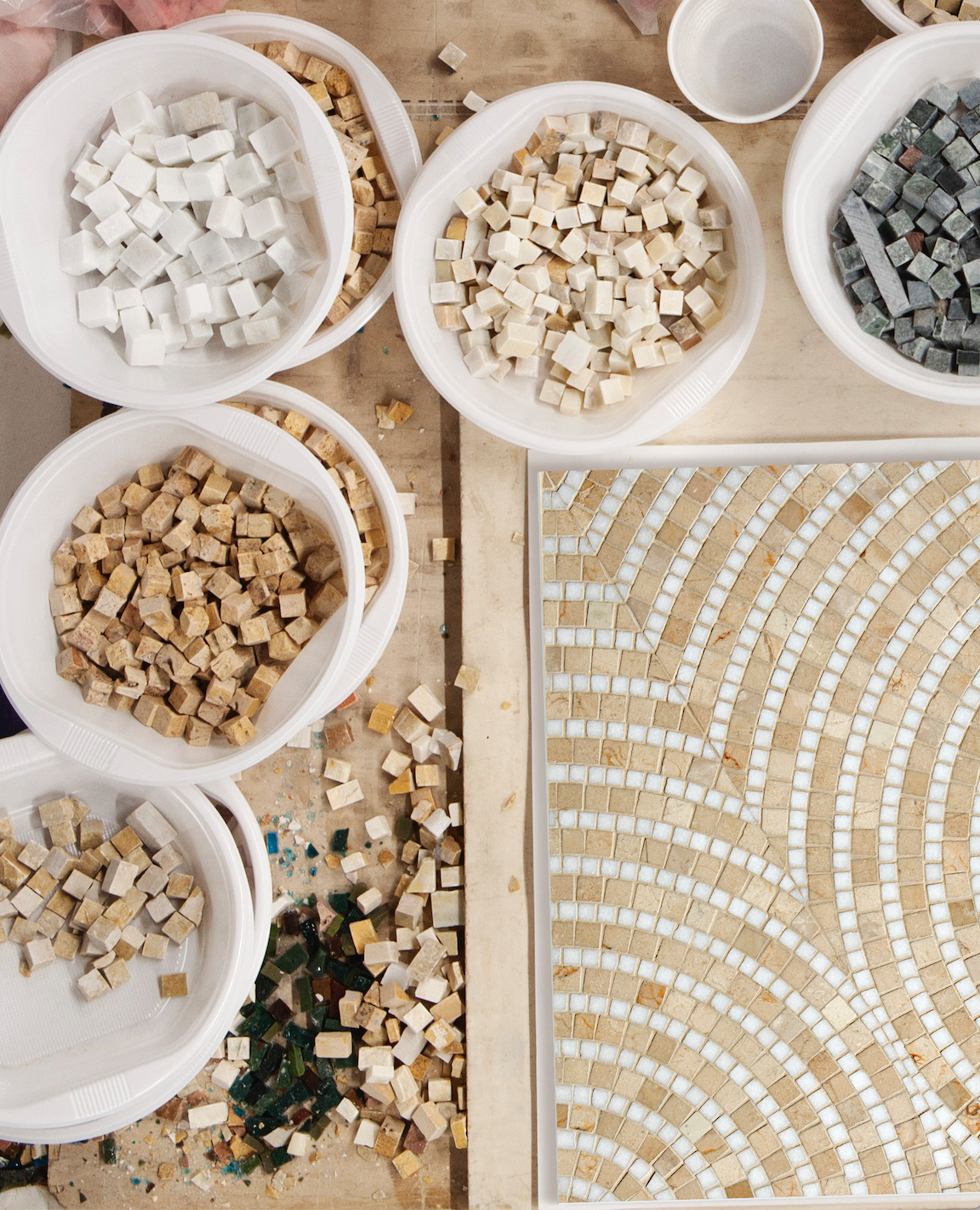Mosaic

Slide title
Write your caption hereButton
Slide title
Write your caption hereButton
Slide title
Write your caption hereButton
Slide title
Write your caption hereButton
Friul Mosaic works closely with Designers and Architects, in every step of the process, to create unique tailor made and bespoke solutions in the Residential, Retail, Commercial and Public sector, boasting numerous prestigious partnerships in the fashion and design world.
Every mosaic, strictly hand made, takes inspiration from Nature to Art, Fashion and Textiles, Design and Architecture, and offers an high level of customization in terms of patter, measurements and materials.
Installation and customer service are offered locally with a team of highly skilled craftsmen, fully trained by
Friul Mosaic.
Friul Mosaic was founded in 1987 by William Bertoia, a Mosaic Maestro, in San Martino al Tagliamento, North East of Italy, about an hour from Venice.
The region has been important for the tradition of mosaic since Roman times, thanks to its main river, the Tagliamento, which bed is characterized by a vaste presence of multi shaped and colored pebbles, great resource for house buildings, streets, bridges and city walls. A great example is the city of Aquilea, at one point, the most important gateway for the Western Empire.
In 1992 the Scuola of Mosaicisti del Friuli was found to maintain the heritage of this precious art. Since then, it has become a world known excellence, where all Friul Mosaic skilled craftsman were trained.
Nowadays Friul Mosaic is a second generation family run business, which combines the know-how and traditions of this ancient craftsmanship with continuous innovations, materials, and the management level required to meet the requirements of modern times.
Every mosaic, strictly hand made, takes inspiration from Nature to Art, Fashion and Textiles, Design and Architecture, and offers an high level of customization in terms of patter, measurements and materials.
Friul Mosaic works closely with Designers and Architects, in every step of the process, to create unique tailor made and bespoke solutions in the Residential, Retail, Commercial and Public sector, boasting numerous prestigious partnerships in the fashion and design world.
Installation and customer service are offered locally with a team of highly skilled craftsmen, fully trained by Friul Mosaic.
Collections
Traditional mosaics are made of small cubes of pieces of stones or hand made glass enamel, called as Tesserae.
Some of the earliest mosaics were made of stone pebbles to reinforced floors.
In modern mosaics a vaster range of materials can be used, with different techniques.
Traditional mosaics are made of small cubes of pieces of stones or hand made glass enamel, called as Tesserae.
Some of the earliest mosaics were made of stone pebbles to reinforced floors.
In modern mosaics a vaster range of materials can be used, with different techniques.
A brief history of Italian Mosaic
Mosaic has been used as floor and wall decorative feature since 3 millennium BC.
The first known example of mosaics made with mixed materials is found in a temple building in Abra (Mesopotamia), using stone, ivory and sea shells.
Mosaic patterns became very popular in ancient Greek and Rome, adorning the floors of Hellenistic and Roman villas, often with mythological subjects, hunting scenes, as centerpieces of a larger geometric design.
During the 5th Century, Ravenna (Italy), the Capital of the Western Roman Empire, became the center of late roman mosaic art.
From 6th to 15th Century, Byzantine culture embraced this form of decorative art, and during this time, mosaic art flourished. Churches interiors were often covered with golden mosaics.
Under their influences mosaic making was also by the Norman King of Sicily in the 12th century and by the eastern influenced city of Venice (the Basilic of St Marc its greater example), and practised by Raphael during Renaissance.
In partnership with









